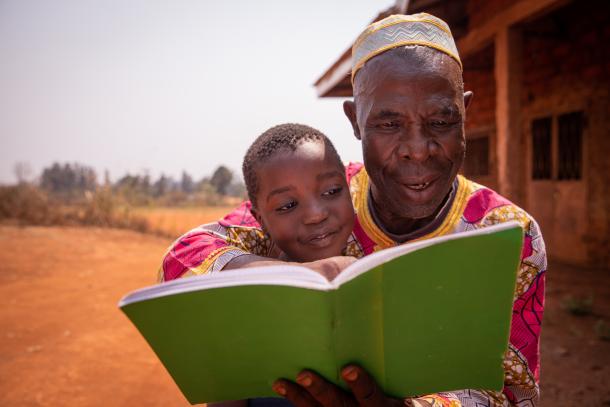
In today’s world, multilingual contexts are the norm rather than the exception. The United Nations Educational, Scientific and Cultural Organization (UNESCO) World Atlas of Languages reveals that there are around 7,000 spoken or signed languages in use around the world. It’s estimated that at least half of the global population is bilingual, navigating daily life in two or more languages or dialects.

Language is more than a tool for communication; it’s a very specific human cognitive faculty and the foundation of our shared humanity. It enables the transmission of experiences, traditions, knowledge and identities across generations.
Languages play a crucial role in promoting peace, fostering intercultural dialogue and driving sustainable development. They permeate every facet of our lives—from family and work to education, politics, media, justice, research and technology. Our values, beliefs, knowledge, identities and worldviews are intricately shaped by language, reflecting the richness of the human experience.
But languages are under significant threat. UNESCO data indicates that around 600 languages have disappeared in the last century. If current trends continue, up to 90 per cent of the world’s languages may become extinct by the end of this century.
International Mother Language Day, observed annually on 21 February, underscores the urgent need to champion linguistic diversity and multilingual education rooted in mother tongues.
For more than seven decades, UNESCO has promoted mother language-based and multilingual education as fundamental to achieving quality, inclusive learning.
Enhanced learning. First, and most obviously, students learn best in a language they understand. Yet UNESCO data shows that 40 per cent of the world’s population does not have access to an education in a language they speak or understand. Our research documents the benefits of being taught in learners’ native languages: in upper-middle- and high-income countries, children who speak the language they are taught in are 14 per cent more likely to read with understanding at the end of primary, compared to those who do not.
In France, children who speak French at home are 28 per cent more likely to be able to read with understanding at the end of primary than children who do not. This share rises to over 60 per cent more likely in countries such as the Islamic Republic of Iran, Slovakia, South Africa and Türkiye.
At the end of lower secondary, adolescents speaking the language of instruction are over 40 per cent more likely to be able to read with understanding compared to those who did not. This ranges from a 4 per cent gap in Canada to around 40 per cent in Germany and the Kingdom of the Netherlands, and over 60 per cent in Thailand.
Improved access and inclusivity through mother tongue education. Adopting a mother language-based, multilingual education improves access to and inclusion in education, particularly for population groups that speak non-dominant, minority and indigenous languages. Studies have shown that such approaches can boost classroom participation, improve retention rates and encourage family and community involvement in education. They also play a vital role in mitigating the challenges faced by migrant and refugee learners, promoting a sense of safety and resilience. Yet—at a time of record displacement—over 31 million young people who have fled war or crisis situations are learning in a language that differs from the official language of their country of origin.
Contributing to peace and sustainable development. The achievement of the Sustainable Development Goals is intricately linked to linguistic diversity and multilingualism. The Global Action Plan of the International Decade of Indigenous Languages (2022–2032), spearheaded by UNESCO, underscores the importance of language choice for human dignity, peaceful coexistence and sustainable development. Commitment to these ideals drives UNESCO support for building inclusive and equitable, quality education opportunities in indigenous languages in both formal, non-formal and informal educational settings.
The potential of multilingual education is enormous, but realizing its full benefits requires a commitment to lifelong learning and a deeper appreciation of the value of linguistic diversity.
To foster thriving multilingual education, we need robust policy support, advocacy and innovation. This includes adopting policies that promote mother language education from early childhood, as seen in diverse countries such as Ghana, Peru, Singapore and South Africa. It also involves recruiting and training teachers and community members competent in learners’ mother tongues, as well as exploring innovative solutions, such as partnerships with digital platforms, to meet diverse language needs.
Partnerships and cooperation at all levels, including across universities, academic centres and institutions that support language development, can also enhance capacity, and expand access to teaching and learning materials in local languages in both print and digital forms. This must be accompanied by formative and summative assessments that are appropriately designed to monitor the learning outcomes of multilingual learners.
Mother language-based, multilingual education must be part of our efforts to address the learning crisis and learning poverty facing many countries around the world.
In an increasingly globalized world, UNESCO remains committed to promoting multilingual education and cultural and linguistic diversity as cornerstones for the sustainability of our societies.
This article by UNESCO Assistant Director-General for Education, Stefania Giannini, was originally published in the UN Chronicle on 20 February 2024, ahead of International Mother Language Day.